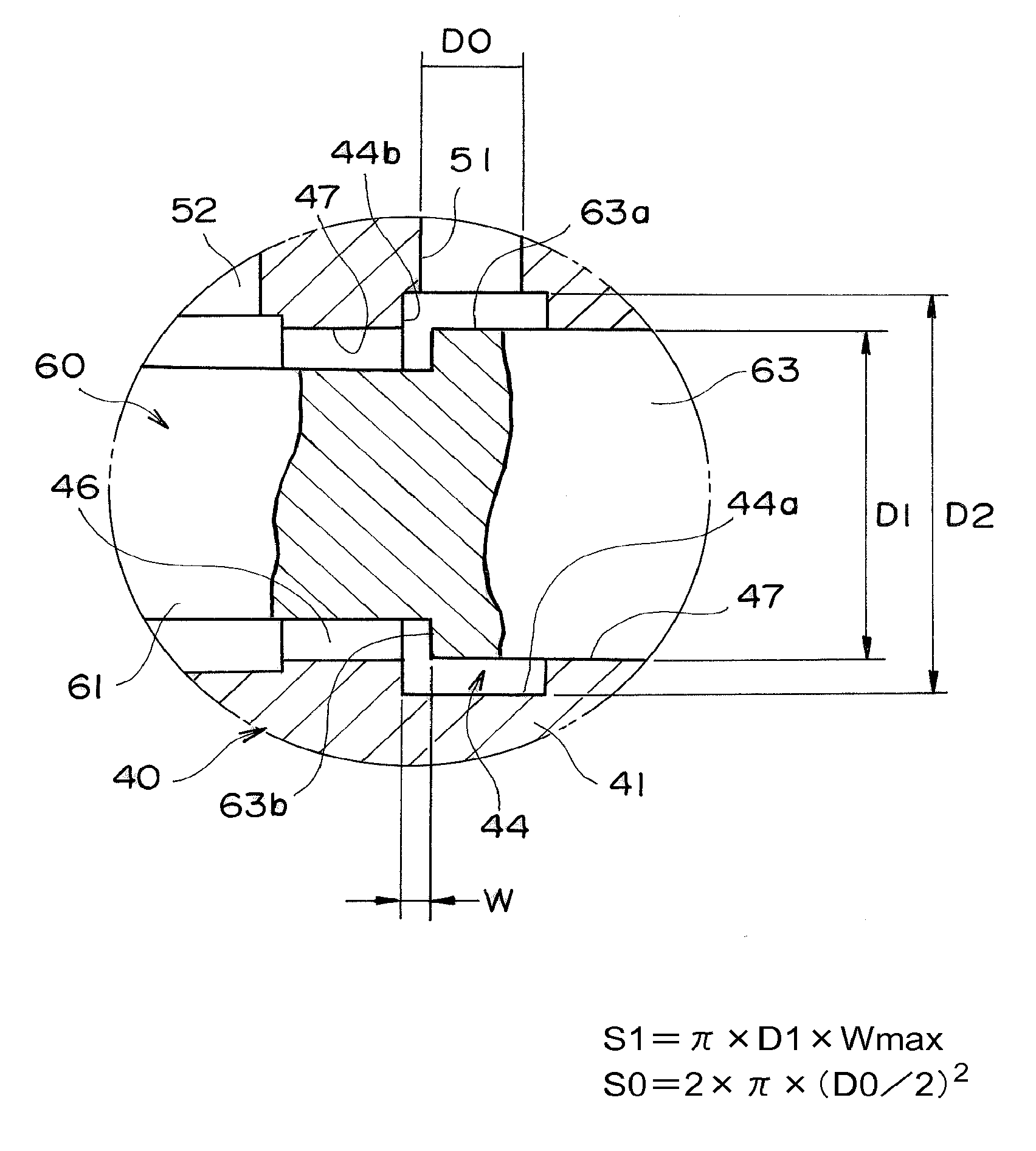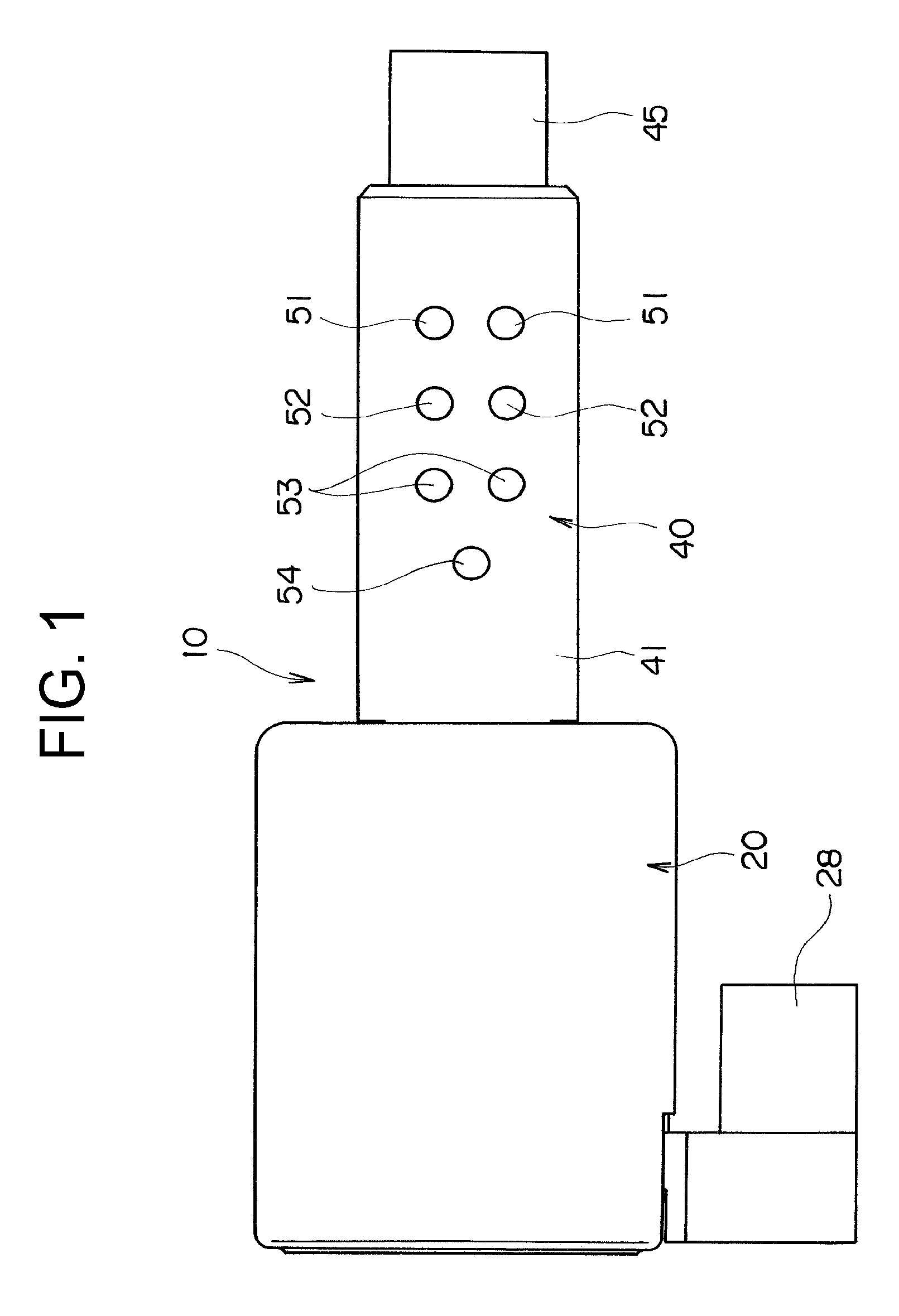Solenoid valve
a solenoid valve and valve body technology, applied in the field of solenoid valves, can solve the problems of destabilization of controllability and decline of contamination resistan
- Summary
- Abstract
- Description
- Claims
- Application Information
AI Technical Summary
Benefits of technology
Problems solved by technology
Method used
Image
Examples
example 1
[0046]The input port 53 of the solenoid valve 10 shown in FIG. 1 to FIG. 4 was connected to a hydraulic pressure providing portion as a hydraulic system; the control port 52 was connected to an object (clutch) to be controlled; the outlet port 51 was connected to atmospheric pressure (external space); and the feedback port 54 was connected to the control port 52. The pressure Po at the input port was 2 MPa; the pressure Pc at the control port was 0 to 2 MPa; the pressure D at the outlet port was atmospheric pressure; and the pressure FB at the feedback port was 0 to 2 MPa.
[0047]It was confirmed that S1 at the outlet port was 17.4 mm2; S0 was 8.3 mm2; and the relation of S1≧S0 was fulfilled. Also, it was confirmed that S1′ at the input port was 17.4 mm2; S0′ was 8.3 mm2; and the relation of S1′≧S0′ was fulfilled.
PUM
 Login to View More
Login to View More Abstract
Description
Claims
Application Information
 Login to View More
Login to View More - R&D
- Intellectual Property
- Life Sciences
- Materials
- Tech Scout
- Unparalleled Data Quality
- Higher Quality Content
- 60% Fewer Hallucinations
Browse by: Latest US Patents, China's latest patents, Technical Efficacy Thesaurus, Application Domain, Technology Topic, Popular Technical Reports.
© 2025 PatSnap. All rights reserved.Legal|Privacy policy|Modern Slavery Act Transparency Statement|Sitemap|About US| Contact US: help@patsnap.com



